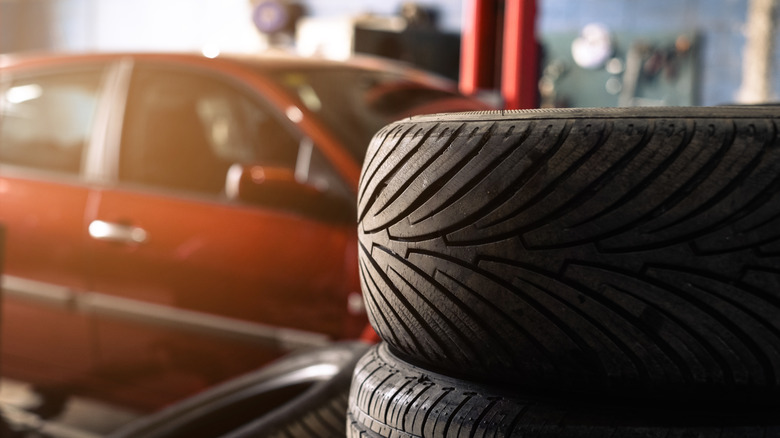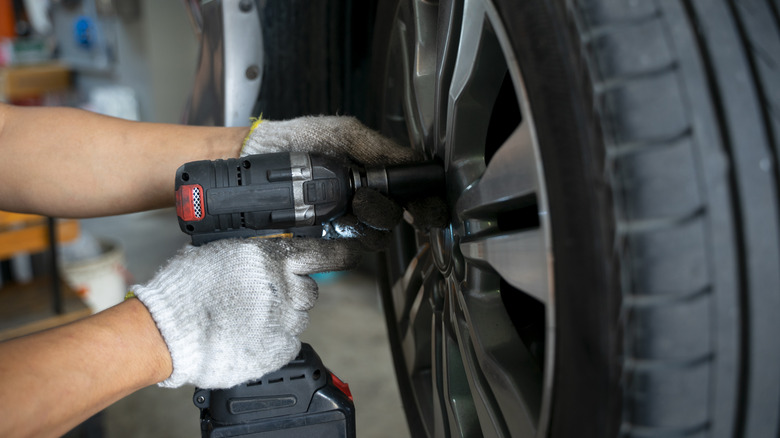
Imaginestock/Getty Images
Regularly changing your tires in pairs with the properly assigned tire and wheel size isn’t going to impact your car at all. But what about if you want bigger tires? Or smaller ones? The short answer is yes, your speedometer will be inaccurate if you change the size of your wheel and tire. In fact, choosing the wrong size tire for your vehicle is one of the many mistakes drivers make when changing their tires. The long answer is that the automaker calibrated the car’s speedometer to work with a very specific tire and wheel size.
Advertisement
Installing a tire and wheel with a different diameter throws off all those calibrations, which not only leads to an inaccurate reading on the speedometer, but also an inaccurate reading on the odometer. You won’t have traveled as far as the car thinks if you go with larger or smaller wheels. A 20 inch tire doesn’t have the same circumference as a 24 inch tire and therefore changes the car’s programming completely.
If you’re desperate to change the tires on your car, you can always ask a professional what the biggest or smallest size you can get without impacting the speedometer. Again, it’s not only the speedometer that’s affected, so there are other aspects to keep in mind when changing your tires.
Advertisement
Other issue with changing wheel size

Naruecha Jenthaisong/Getty Images
Another thing to pay attention to when swapping out tires of a different size is the wheel clearance in the wheel-well. If the tires are too big, there won’t be enough room for the tires to maneuver without hitting the fender. And if you’re determined to use bigger tires, there’s a slew of modifications that need to be made first. The suspension would have to undergo adjustments and since the brakes and transmission can be affected, a mechanic would have to modify them too. Furthermore, the predicted fuel economy for the car would be different than expected with different tires. However, a few calculations can allow you to safely fit your car without affecting the speedometer.
Advertisement
Plus sizing is the name of the game and that’s not referring to getting a large instead of a medium at McDonald’s. It involves replacing the stock tires with new ones, changing the aspect ratio, width, and height in some way. If you’ve heard anyone ever say «Plus one» or «Plus two,» this is what they’re referring to. If a driver gets a tire with the same diameter but the width increases, it’s a Plus Zero. Whereas, if the car comes with 20-inch tires and you want 22-inch tires from one of the major tire brands, you would perform a «Plus Two». However, since the tire is two inches larger, you would want to decrease the standing height of the new tire by the same two inches.